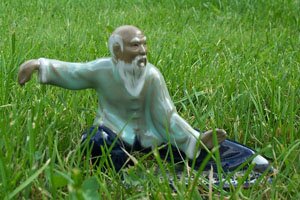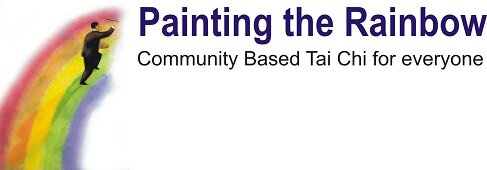About TaiChi

Tai Chi (or Taiji) is a healing and martial art which originates in China. The oldest fully documented style of Tai Chi dates from the 1820s, though Tai Chi's theories and practice are believed to date from the 12th Century and the monk Zhang Sanfeng.
Zhang Sanfeng studied breathing techniques under his masters and also studied martial arts at the famous Shaolin Monastery. He eventually combined the martial arts and breathing exercises to form the core principles and the original 13 movements of Tai Chi.
The majority of medical research has shown that Tai Chi has many beneficial effects including improved balance, flexibility and cardiovascular fitness in the elderly. Most recently in 2008, two seperate studies published in the British journal of Sports Medicine showed that Tai Chi could also be of benefit for people suffering type 2 diabetes, showing a drop in blood sugar levels, and a boost in the level of cells and chemicals key to a healthy immune response.
Zhang Sanfeng studied breathing techniques under his masters and also studied martial arts at the famous Shaolin Monastery. He eventually combined the martial arts and breathing exercises to form the core principles and the original 13 movements of Tai Chi.
The majority of medical research has shown that Tai Chi has many beneficial effects including improved balance, flexibility and cardiovascular fitness in the elderly. Most recently in 2008, two seperate studies published in the British journal of Sports Medicine showed that Tai Chi could also be of benefit for people suffering type 2 diabetes, showing a drop in blood sugar levels, and a boost in the level of cells and chemicals key to a healthy immune response.
TAI CHI FOR REHABILITATION
Tai Chi is a form of gentle exercise that combines deep breathing and relaxation techniques with slow, graceful movements. It can be carried out individually or in groups. Because Tai Chi is largely based on technique, it does not require great strength or flexibility. It has become an increasingly popular activity for people with MS and is associated with stress relief and health improvement.
The physical and psychological effects of Tai Chi have been examined extensively in both older people and those with chronic conditions. Researchers in Boston, Massachusetts carried out a review of 47 controlled and observational studies that looked at the impact Tai Chi had on people with chronic health problems, including MS.
Although there were limitations or biases in most of the studies, the group concluded that there was evidence of medical benefit. They found that long-term Tai Chi practice had favourable effects on the promotion of balance control, flexibility and cardiovascular fitness and reduced the risk of falls in older people. It was also found to reduce pain, stress and anxiety.
Although there were limitations or biases in most of the studies, the group concluded that there was evidence of medical benefit. They found that long-term Tai Chi practice had favourable effects on the promotion of balance control, flexibility and cardiovascular fitness and reduced the risk of falls in older people. It was also found to reduce pain, stress and anxiety.
As a martial art Tai Chi involves considerable focus on spiritual aspects and on increasing self-concept and concentration. The majority of teaching in the UK only deals with the exercise side of Tai Chi.
Reference
Wang C, Collet JP, Lau J.
The effect of tai chi on health outcomes in patients with chronic conditions: a systematic review.
Archives of Internal Medicine 2004;164:493-501
Wang C, Collet JP, Lau J.
The effect of tai chi on health outcomes in patients with chronic conditions: a systematic review.
Archives of Internal Medicine 2004;164:493-501
ORIGINS OF PAINTING THE RAINBOW
Painting the Rainbow (PtR) was formed as a natural development of Cheng Man Ching style tai chi being taught in our sister organisation Kai Ming. In PtR the focus is self-defence for life.... dealing with the stresses and strains of daily life through the use of tai chi and chi-kung (qigong). Chi-kung literally translates as 'breath exercise' and is ideal for pulmonary and cardiovascular rehabilitation.
Extensive research is available giving clear evidence of the benefits of both tai chi & chi-kung for health & well-being. Tai Chi is proven to help with areas including but not limited to:
- Falls prevention
- Cardiac rehab (phase III & IV)
- Cardiac failure (mild to moderate)
- COPD (chronic obstructed pulmonary disease)
- Pain management both chronic and acute
- Stroke
- MS (Multiple sclerosis)
- Neuropathy
- Diabetes
- Arthritis
- Sarcopenia (muscle wastage)
- Eating disorders
- Mental health
- Depression
